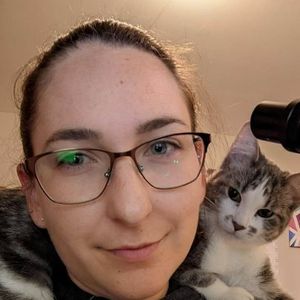Fungal Infection (Malassezia pachydermatis) of the Skin in Cats
Key takeaways
Malassezia pachydermatis is a normal yeast found on the skin of all cats and does not cause infection in healthy cats.
- In some cats, the population of Malassezia is able to grow to abnormally high levels resulting in infection
- Overgrowth of Malassezia is often associated with underlying health conditions that reduce the natural immunity of the skin
- Symptoms of Malassezia infection include greasy coat, discoloration of the skin around the nails, persistent acne, skin redness, and itchiness
- Investigation involves physical examination, blood work, skin cytology, skin biopsy, and fungal culture
- Treatment options include topical or systemic antifungal medication in combination with shampoos, essential fatty-acid supplements, and other treatments to maintain the skin barrier
- Prognosis for resolution is good but recurrence is common
- Some underlying conditions that predispose to infection may have a guarded prognosis
Chat with our licensed vet techs in the app to learn more and have your questions answered.
A closer look: Fungal Infection (Malassezia pachydermatis) of the Skin in Cats
Malassezia infection is an uncommon condition in cats. While it is not life-threatening, it warrants veterinary investigation because it is uncomfortable and irritating. Malassezia infections generally respond well to treatment, but recurrence is common if an underlying cause is not identified and treated. Underlying conditions that predispose to Malassezia infection are sometimes serious.
Connect with a vet to get more information
Risk factors
While the exact mechanism that allows yeast overgrowth is not known, certain conditions may be seen concurrently.
Malassezia infection is more common in Sphynx and Devon Rex cats. Outdoor, unvaccinated cats are at higher risk of contracting contagious auto-immune diseases like FIV and FeLV which predispose cats to Malassezia infection.
The severity of Malassezia infection varies significantly. Many cases are mild and may not be readily diagnosed. Other cases are accompanied by symptoms associated with the underlying cause of reduced skin immunity.
Possible causes
Malassezia infection is thought to be secondary to a reduction of the natural immunity of the skin. It is caused by overgrowth of the Malassezia spp. yeast that are otherwise naturally part of the feline skin microbiome.
Main symptoms
Testing and diagnosis
Investigation of Malassezia infection involves:
- Physical examination
- Blood work
- Urinalysis
- Microscopic examination of the skin (cytology)
- Skin biopsy
- Fungal culture
Steps to Recovery
Treatment options include:
- Oral or topical antifungal medication
- Topical antiseptics (such as medicated shampoos) to reduce overgrowth
- Maintenance of the skin barrier using essential fatty-acid supplements
- Treatment of the underlying cause
Treatments may include medications or surgery, but some underlying diseases may not have any treatment options.
Malassezia infection usually responds well to treatment, and the prognosis is good. Cats with some underlying conditions that predispose to infection may have a less favorable long-term prognosis.
Some cases are curable but many require ongoing management to prevent recurrence.
Prevention
Prevention is not required in most cases as cats’ natural immunity maintains Malassezia at the appropriate level. Malassezia infection is not contagious as a small population of this yeast species is normal on the skin of all cats.
Cats that are predisposed to Malassezia infection may require ongoing treatment to prevent recurrence, including:
- Regular cleaning with topical antifungal or antimicrobial shampoo
- Regular washing with anti-seborrheic shampoo
- Intermittent use of oral antifungal medications
- Treatment of underlying disease
Is Fungal Infection (Malassezia pachydermatis) of the Skin in Cats common?
Malassezia infection is uncommon in cats overall but is more common in Sphynx and Devon Rex cats, or cats with underlying poor immunity.
Typical Treatment
- Oral or topical antifungal medication
- Topical antiseptics
- Essential fatty acid supplements
- Treatment of the underlying cause







